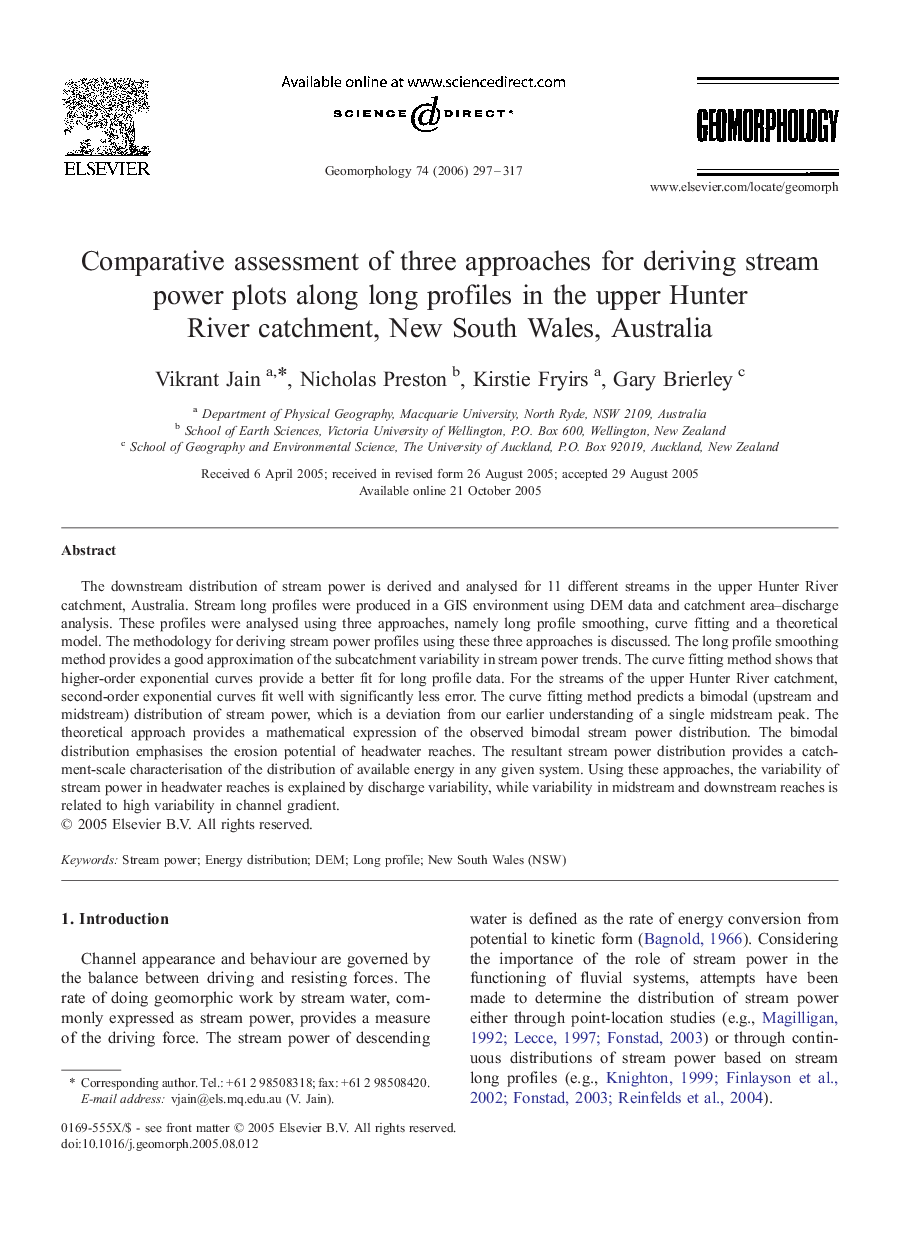| Article ID | Journal | Published Year | Pages | File Type |
|---|---|---|---|---|
| 4687650 | Geomorphology | 2006 | 21 Pages |
The downstream distribution of stream power is derived and analysed for 11 different streams in the upper Hunter River catchment, Australia. Stream long profiles were produced in a GIS environment using DEM data and catchment area–discharge analysis. These profiles were analysed using three approaches, namely long profile smoothing, curve fitting and a theoretical model. The methodology for deriving stream power profiles using these three approaches is discussed. The long profile smoothing method provides a good approximation of the subcatchment variability in stream power trends. The curve fitting method shows that higher-order exponential curves provide a better fit for long profile data. For the streams of the upper Hunter River catchment, second-order exponential curves fit well with significantly less error. The curve fitting method predicts a bimodal (upstream and midstream) distribution of stream power, which is a deviation from our earlier understanding of a single midstream peak. The theoretical approach provides a mathematical expression of the observed bimodal stream power distribution. The bimodal distribution emphasises the erosion potential of headwater reaches. The resultant stream power distribution provides a catchment-scale characterisation of the distribution of available energy in any given system. Using these approaches, the variability of stream power in headwater reaches is explained by discharge variability, while variability in midstream and downstream reaches is related to high variability in channel gradient.
